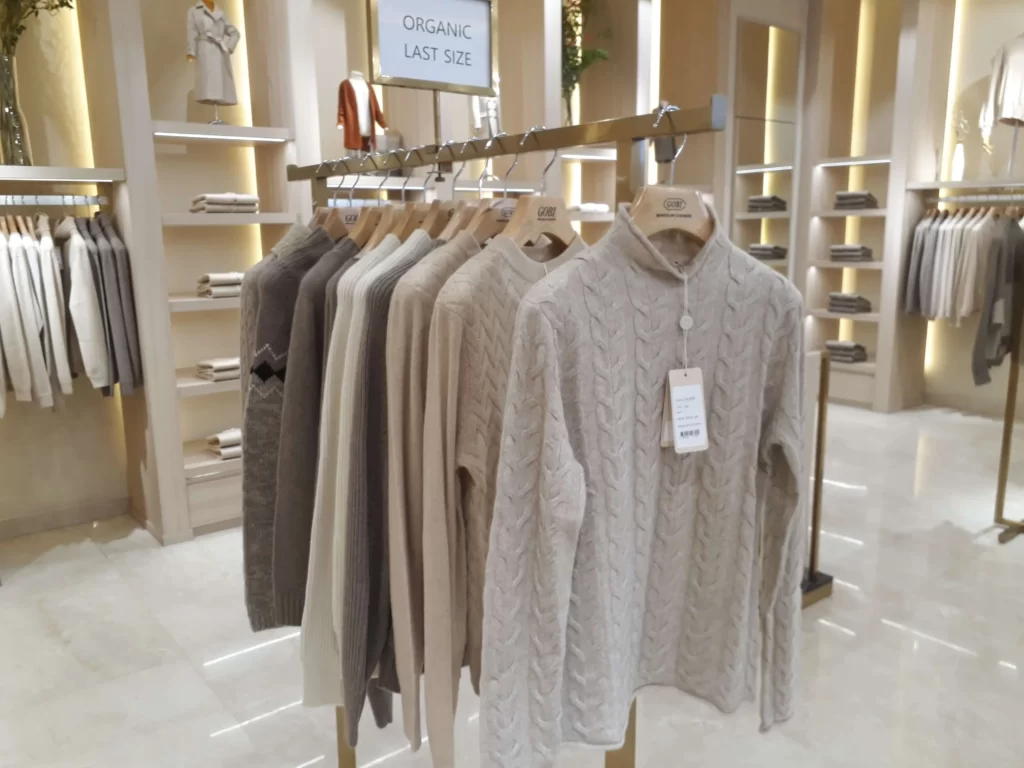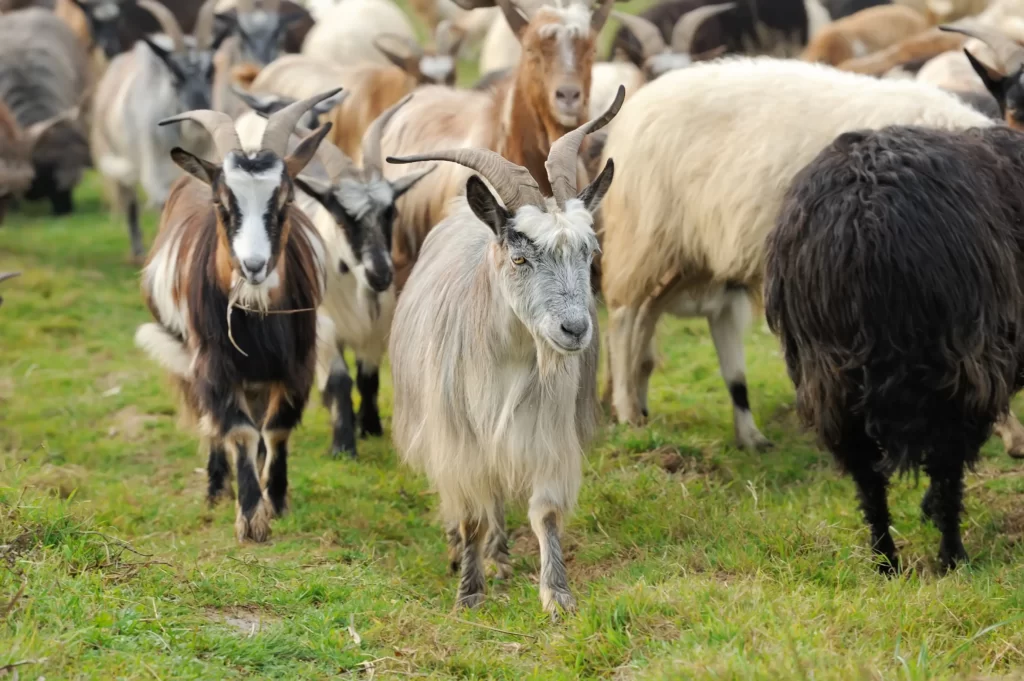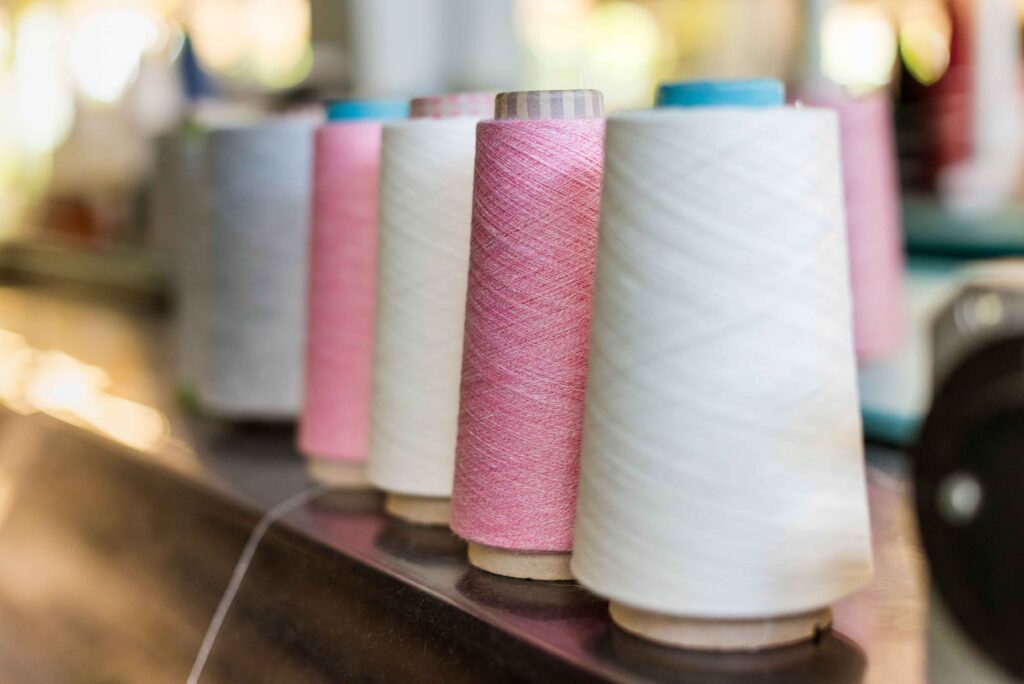
Cashmere is made from the soft undercoat of the cashmere goat. These goats are found in the high altitudes of Central Asia, such as Mongolia, China, and India.
The cashmere goat has two coats of fur: a coarse outer coat and a soft undercoat. The undercoat is what is used to make cashmere.
Traditionally, the Kashmir goats are raised in Northern Asian countries, with the largest cashmere producers being China, Mongolia, and Afghanistan.
Cashmere shares many of the same properties as pashmina wool and yak wool, making it an excellent choice for sweaters and coats.
However, the cashmere goat is also found in black, brown, and gray, and is known for its thick, curly horns.
In some regions, the cashmere wool is combed by hand. In others, it is collected using a coarse comb.
Cashmere is a very expensive material, but it is also very luxurious. It is often used to make high-end clothing, such as sweaters, scarves, and coats.
Cashmere is also a popular material for bedding and other home textiles.
Facts about cashmere:
- The annual yield of cashmere from a single goat is about 150-250 grams.
- The highest quality cashmere comes from goats that are raised in cold climates.
- Cashmere is a very soft and delicate fabric, so it should be hand-washed and dried flat.
Table of Contents
What Makes Cashmere So Special?
Cashmere is highly sought after for several reasons, making it a cherished fabric for luxury garments and accessories:
- Softness: Cashmere is incredibly soft and gentle on the skin, offering unparalleled comfort and a luxurious feel.
- Warmth: Despite its lightweight nature, cashmere provides exceptional warmth, keeping you cozy in chilly weather.
- Insulation: The unique structure of cashmere fibers allows it to trap body heat, making it an ideal choice for cold climates.
- Durability: High-quality cashmere is durable and long-lasting, making it a worthwhile investment.
- Versatility: Cashmere can be woven into various thicknesses, making it suitable for both winter and transitional wear.
- Breathability: Despite its warmth, cashmere is breathable, ensuring you stay comfortable and dry.
Cashmere shearing
In contrast to the billions of animals kept in captivity on factory farms, especially chickens and hogs, cashmere goats often roam and graze freely.
This gives them the chance to enjoy a life that is very different from that of other livestock.
Although many of these animals are subjected to difficult climatic conditions that are good for the development of their lucrative wool, they also suffer a great deal when the wool is taken.
As for me, I saw many times goat shearing, it is not as cruel as some people think.
During the process of gathering, the wool is separated into the down and guard hair.
The latter is used to make rugs, brushes, and interfacing.
The long, fluffy guard hair is also used to make cashmere items.
During the process of shearing the cashmere goat, goats are not slaughtered for their wool. Instead, they are bred for their wool.

Cashmere fibers are extraordinarily fine, measuring less than 18.5 microns.
The texture of these fibers is unique to cashmere, making it so incredibly soft and luxurious.
The production of cashmere is a high-quality fiber.
It is soft and silky, and it is available in different colors and types.
To start the process, the fibers may be dyed to the desired hue or blended with other materials, such as silk or different wools.
Cashmere softness
The softer type is typically more expensive than the more luxurious type. The softer one, however, is a great choice for both women and men.
As pure cashmere requires a labor-intensive production procedure in which the fibers are manually extracted from goats’ molted coats, it is regarded as one of the most upscale textiles.
The Ethical Aspect of Cashmere Production
As the demand for cashmere grows, concerns regarding the ethical treatment of cashmere goats have come to the forefront. Overgrazing and improper herding practices can lead to environmental degradation and harm to the goats. However, responsible cashmere producers are increasingly adopting sustainable and ethical practices.
Responsible cashmere production involves proper grazing management, ensuring the goats have access to adequate food and water, and promoting ethical harvesting methods.
Supporting brands that prioritize ethical sourcing and sustainable practices can contribute to the well-being of the goats and the environment.
Why is cashmere so expensive?
- Scarcity: Cashmere is a very rare fiber. Only a small number of goats produce cashmere, and the annual yield from each goat is relatively low. This means that there is a limited supply of cashmere available.
- Labor-intensive production: The production of cashmere is a labor-intensive process. The cashmere must be hand-plucked from the goats, and then it must be cleaned, processed, and spun into yarn. This all takes a lot of time and effort, which drives up the cost of cashmere.
- Luxury status: Cashmere is seen as a luxury fabric, and this drives up the price. People who buy cashmere are often willing to pay a premium for the soft, luxurious feel of the fabric.
In comparison to other fibers like wool, which are produced in much larger quantities each year, cashmere is produced in much smaller quantities, ranging from 4000 to 10,000 metric tons annually.
The Cashmere and Camel Hair Manufacturers Institute CCMI estimates that the global production of cashmere raw materials is equivalent to 1% of the production of sheep’s wool used in clothing.
When compared to other animal hair fibers, cashmere has a substantially lower production per cashmere goat (about 100–200g per year). For instance, a sheep can generate one to thirteen kilograms of wool annually.
To sum up, a goat is the most common source of cashmere. If you’re looking for the best quality, look for that where Cashmere originally comes from.
Finally, you can view our cashmere sweater review here.
Frequently Asked Questions (FAQs)
What is the Difference Between Cashmere and Regular Wool?
Cashmere comes from the undercoat of the cashmere goat, while regular wool is obtained from sheep. Cashmere is softer, finer, and provides better insulation than regular wool.
Can Cashmere Be Harvested Without Harming the Goats?
Yes, cashmere can be harvested without harming the goats. The goats naturally shed their undercoat, and responsible harvesting methods ensure the goats’ well-being.
Why is Cashmere Expensive?
Cashmere is expensive due to the labor-intensive harvesting process, limited supply, and the exceptional quality and properties of the fiber.
Is Cashmere Suitable for All Climates?
Cashmere is suitable for colder climates due to its excellent insulation properties. However, it can also be woven into lighter fabrics for transitional wear.
How Do I Remove Wrinkles from Cashmere?
To remove wrinkles from cashmere, steam the garment by holding it at a distance from a steamer or ironing with a pressing cloth on low heat.
What Makes Cashmere a Sustainable Choice?
Cashmere can be a sustainable choice when produced ethically and responsibly. Supporting brands with transparent and sustainable practices is essential.
